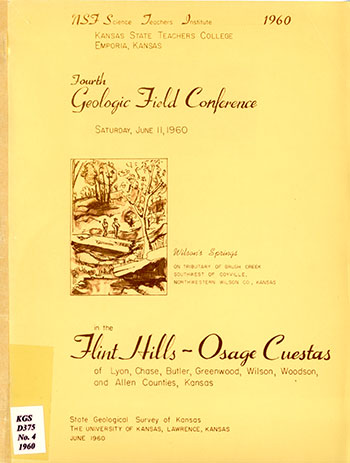
Kansas Geological Survey, Guidebook, originally published in 1960

Originally published in 1960 for the National Science Foundation Science Teachers Institute. This is, in general, the original text as published. The information has not been updated.
Geologists have two kinds of things with which to work. One is the rocks themselves, which are the only documents of earth history. There is almost no end to the ways in which these rocks can be investigated. The tools are numerous and some are extremely complicated. The other kind of thing is processes that can be seen or that rationally can be postulated as taking place. These too the geologist must study; for can one believe otherwise than that unchanging natural laws have operated for a long time in the same ways they are working now?
One can see limy mud on the floor of a present sea and even measure the rate of accumulation. Little imagination is needed to believe that limestones now high in mountains were once on sea floors. One can see silt carried seaward by streams and can reasonably explain some other rocks. Now and then people have seen a mountain built by volcanic action, and rather ancient volcanic mountains are definitely identified. One cannot see, however, molten material deep in the earth freeze into solid rock, but a reasonable theory to explain the making of granite can be formulated.
To facilitate study and discussion, rocks are classified and reclassified and placed in smaller and smaller "pigeon holes." Rocks are classed not only as to what they are but as individual units, either layers or other masses, within the crust of the earth. Processes too are classified; rocks are then reclassified not only in accordance with what they are but according to how they may have been made and what processes are believed to have affected them.
When rocks are studied, then, it ought to be realized two things are available: the rocks and an accumulation of ideas.
John Mark Jewett
Kansas Geological Survey
Placed on web Dec. 7, 2018; originally published in June 1960.
Comments to webadmin@kgs.ku.edu
The URL for this page is http://www.kgs.ku.edu/Publications/Trips/Reports/1960/index.html